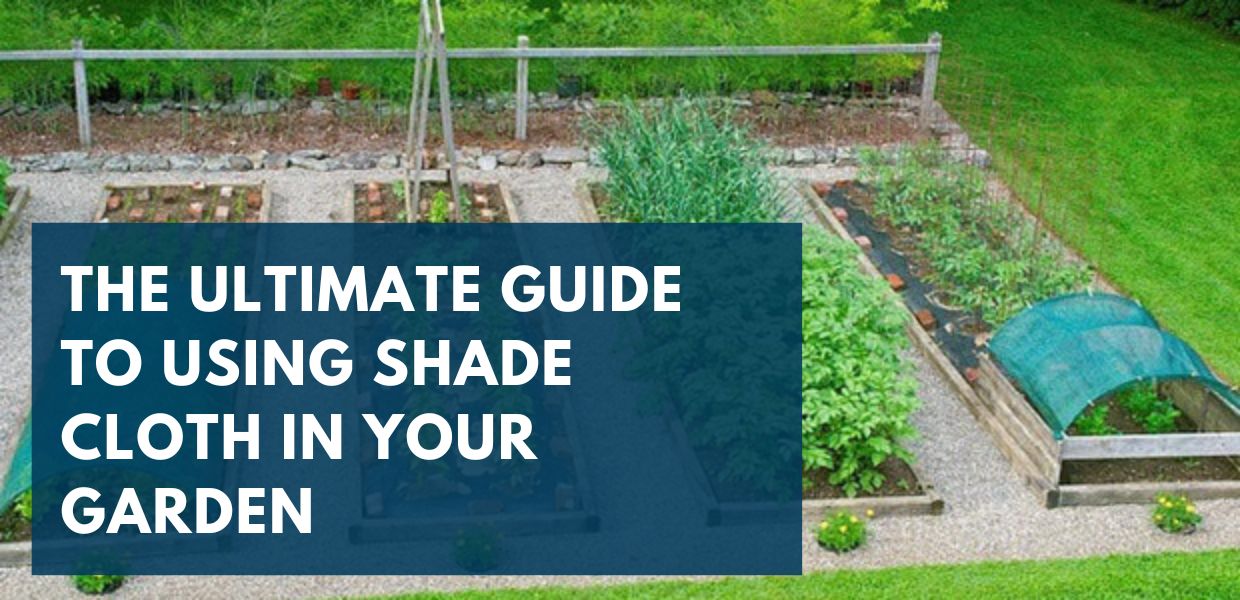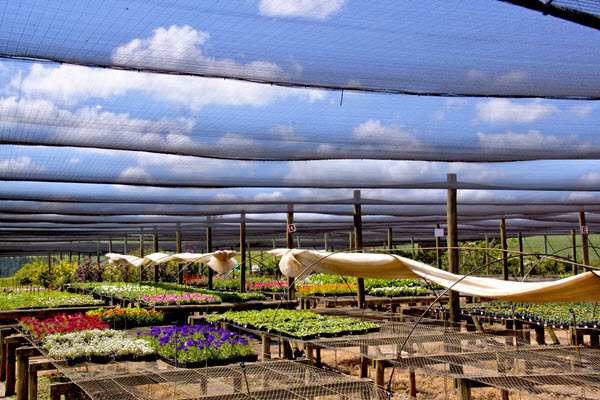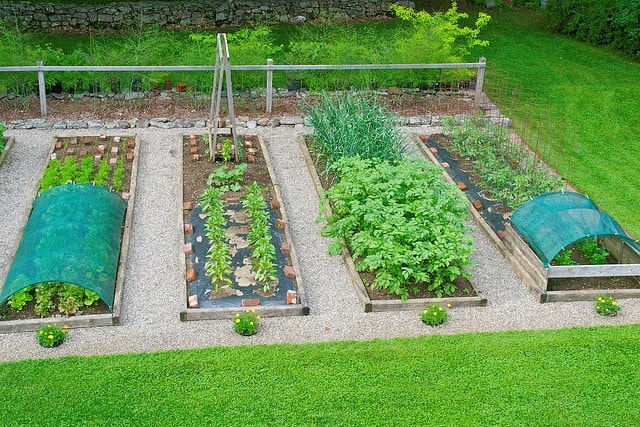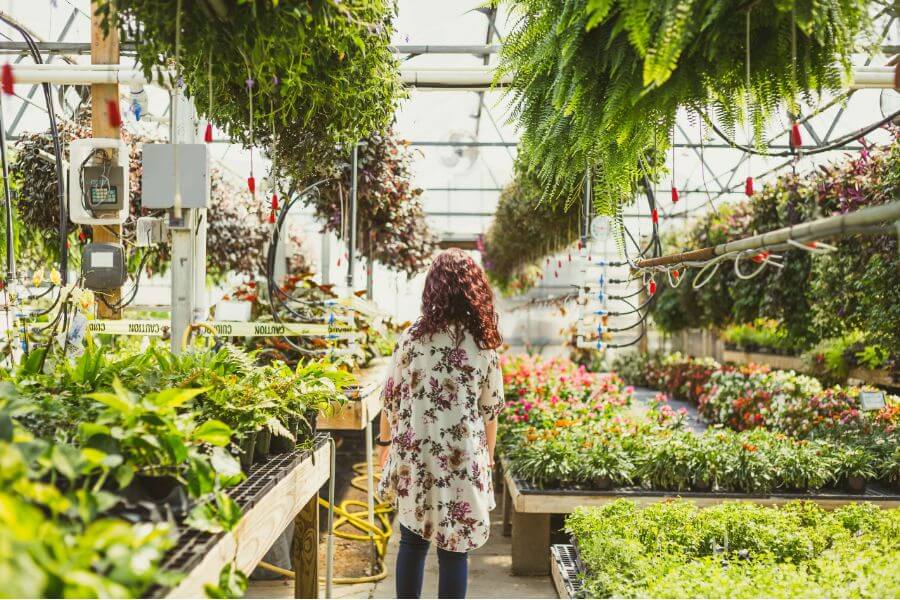
Upholding a thriving garden in Australia's harsh weather conditions can prove to be a challenge. Thankfully, there is a solution! Many gardeners have chosen to incorporate shade cloth, a durable and woven material, in their gardens. Shade cloth can be used to protect their plants against the harsh Australian sun rays and elemental exposure.
Shade cloth is primarily used for dust control and outdoor advertisements in the construction industry, however, its use as a handy addition has seen it increase in popularity amongst gardeners.
This is because shade cloth is a durable material that can provide protection for 10-20 years (depending on material choice, location, weather etc). It is also an inexpensive and effective method that can help ensure a fruitful of harvest. In addition to the protection benefits, shade cloth comes in a range of thicknesses, styles and colours to suit the requirements of your patio plants and the style of your outdoor garden area.
Request FREE Patio Quote
Call Us On (08) 9493 7115

How Can Shade Cloth Be Used to Help My Garden?
Plants require the sun to grow and blossom, but each plant will vary in how much light and heat they ideally require. When Australia really starts to hit the hot Summer months, shade cloth can provide gardeners with a well-needed cooler environment to spend their time in tailoring their garden and the amount of light penetration each plant is receiving.

Where Can I Use Shade Cloth in My Garden?
Installing shade cloth for your plants can help them grow stronger, and last longer. For the best results, consider using shade cloth in the following ways:
- You can hang shade cloth over freestanding covers, ferneries and pergolas.
- Shade cloth can be used to create shade houses.
- Shade cloth can be used inside your transparent greenhouse (if your plants require warmth but are sensitive to direct sunlight).
- Shade cloth can be used for raised garden beds that have solid arching.
- You can drape, cover and wrap shade cloth to any requirement that you have.
Shade cloth can be found in a wide range of UV stabilised densities; this will allow a tailor-made shade solution based on each individual plants requirements. Most retailers offer densities of 30 percent, 50 percent, 70 percent and 90 percent. The 70 percent cloth is great for covering pergolas and gazebos; 30 percent is also popular to encourage plant growth.
Which Shade Cloth Will Be Best For My Garden?
The shade cloth you should choose to use really depends on the environment you have selected to grow your plants in. Some plants prefer certain density percentages and coloured shade cloths while others are not as picky. We suggest you seek advice from a plant nursery to determine your plants' requirements.
Shade Your Veggie Garden - Help Your Vegetables Grow
Shading your veggie garden can offer numerous benefits. It helps protect your plants from harsh environmental conditions, supports healthier growth, and improves overall productivity. Here are some of the key advantages:
-
Protecting from harsh sunlight: Australia’s hot sun can bring extreme heat, which can damage delicate plants. Veggie garden shade cloth provides a protective barrier, shielding your garden from direct sun exposure and reducing heat stress.
-
Extending growing season: Garden shade cloth helps regulate temperatures to protect your veggies from unpredictable weather, heat waves and frost. This creates a more stable environment, allowing you to extend your plants’ growing season and get the most from your garden.
-
Reducing water loss: Garden shade cloth helps to reduce evaporation and retain soil moisture. This helps to support healthy root growth and allows your veggies to flourish.
-
Pest control: Garden shade cloths help to protect your veggies by creating a physical barrier against birds, insects and other pests.
Can You Use Shade Cloths For Greenhouses?
One of the best benefits of a greenhouse is the garden cover and temperature regulation it provides during summer and winter. Ensuring plants have adequate protection and environmental conditions is imperative for their growth. Adding shade cloth to your greenhouse structure is a cheap and easy way to help your plants be happy and thrive within shade houses.

What Are Shade Cloths Made Of?
Your options can choose either knitted shade cloth or woven shade cloth. Both options work for a variety of plants but there are important components that will make a difference when it comes to cloth material, density, how heavy duty the shade cloth is and the effect it will have on your garden cover.
Knitted Shade Cloth
Made of a polyethylene blend, this knitted shade cloth is made to be lightweight but still durable. The main goal is to reflect any heat and light to keep plants cool and limit sunlight while providing light shade.
Things to know about knitted shade cloths include:
- Easy installation.
- Best for general use.
- Comes in a variety of colours.
- It will not unravel if it has a hole due to the way it’s built.
Woven Shade Cloth
Woven shade cloth on the other hand is more heavy-duty and perfect for full garden cover during winter. Made from 100% polyethylene, this dense cover allows heat build-up, which is perfect for plant protection during winter. It also provides more sun coverage than its counterpart, but it is heavier so may be harder for an easy installation.
Things to know about woven shade cloths:
- The material is heavier, so it may be harder to install.
- Primarily used for greenhouses.
- Limited colour options.
- It will unravel if a hole occurs in the material.
What Is Density Percentage?
Shade cloth is either knitted or woven. We recommend using knitted shade cloth for gardens as the difference will permit different levels of sun penetration and heat. In addition to the level of UV protection your plants require, you should consider what percentage of sun blockage is ideal for the plants that you want to grow in your garden.
- 30 percent to 60 percent: Ideal for vegetables, fruit trees and nurseries. Please note that shade cloth will also offer your vegetables and fruit trees protection from birds that enjoy fruits and vegetables as much as we do.
- 70 percent: Generally implemented in greenhouses.
- 90 percent: Ideal as a ground cover to discourage weed growth.
Shade cloth will dissipate a large level of the head load that your plants would be receiving if they are not adequately covered. Shade cloth in the garden should be considered an investment due to the reduction of energy and water costs that are required during summer to protect your garden.
Request FREE Patio Quote
Call Us On (08) 9493 7115
Tips to extend the life of your Garden Cloth
Garden shade cloth typically lasts between 5 and 12 years, depending on the material, climate, and installation location. Here are our top tips to help you maximise its lifespan:
Correct Installation
How the shade cloth is installed can significantly affect its lifespan. If installed incorrectly, rainwater may pool on top, or the cloth may flap excessively in the wind. Over time, these issues can cause the fabric to wear down and eventually tear.
Cleaning & Maintenance
Debris, dust, and other materials can accumulate on your garden cloth, weighing it down and potentially causing damage over time. Additionally, in humid conditions, the cloth may become susceptible to mould. Regular cleaning can help extend its lifespan and maintain its effectiveness.
Remove it When it’s not necessary
Garden cloth is excellent for providing shade to your garden bed. However, depending on your local climate, it may not be practical to keep it up during colder months or in particularly windy conditions.
Why Choose Great Aussie Patios
With over 25 years of experience, our team at Aussie patios offer you the finest services across West Australia. Whether you need advice on how to install garden shades, or you are looking at installing a new patio or roof, let us provide you with expert advice and support.
For more information on how we can help, make sure to contact a friendly member of our team today!
FAQs
What Colour Shade Cloth Is Best?
The colour of your shade cloth depends on the photoreceptor requirements of your garden plants. Green and black shade cloths are better for tomatoes, lettuce, squash and turnips while white shade cloths are more suitable for apple, fig and guava trees.
What Percentage Shade Cloth Should I Use?
Depending on the purpose of your shade cloth use, you can choose the lower-density shade cloths to promote plant growth and the higher-density shade cloths for areas that require more shade. High-density shade cloths are great for covering pergolas and greenhouses.
Does Shade Cloth Keep Rain Out?
No, shade cloths generally don’t keep the rain out, they are made from non-100 % or blends of polyester.
Does Shade Cloth Reduce Heat?
Yes, choosing a low-density, knitted shade cloth, in a light colour gives your plants protection from the heat.
What Is the Best Shade Cloth for a Vegetable Garden?
Green knitted shade cloths with a 30% density are ideal for a vegetable garden. Letting in an ample amount of light and heat helps promotes vegetable growth.
Should I Leave Shade Cloth on All Year Round?
Determining wether or not to keep your shade cloth on all year round depends on the climate of where you are, and the type of plants that you grow.
Typically during summer, you will need the sun shade for plants to protect them from extreme heat and intense sunlight. However, during winter, garden bed shade is typically less important as you want more sun exposure for your plants.
How Long Does Shade Cloth Last?
Shade cloth can last anywhere between 5-12 years depending on the fabric, care and maintenance.